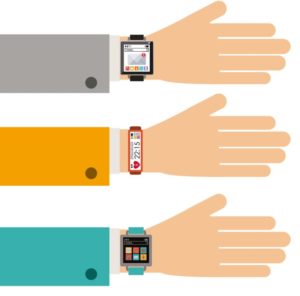
American circuit designer and manufacturer Maxim Integrated Products has announced its new wrist-based system designed for the continuous monitoring of blood-oxygen saturation (SpO2) levels and heart-rate variability (HRV), the MAXREFDES103.
SpO2 is an indicator of oxygen levels in capillary blood and can provide insights into a person’s health. When combined with other vital signs, SpO2 levels offer clues into heart health, sleep patterns and respiratory function.
While normal levels of blood oxygen fall in the 95 to 100 percent range, anything below 90 percent requires a consultation with a medical professional to determine the cause and take preventative action for potentially more serious outcomes.
Traditionally, to check SpO2 levels people would need to visit a medical facility, but wearable devices equipped with biosensors have provided wearers with continuous monitoring of their SpO2 levels, allowing them to alert medical professionals to hazardous patterns that may have otherwise gone undetected.
Blood-oxygen levels are measured using a technique called pulse oximetry – based on the modulation of transmitted light by the absorption of pulsatile arterial blood – resulting in a photoplethysmographic (PPG) signal.
Algorithms then turn the data from the PPG signal and convert it into a SpO2 number.
However, measuring SpO2 on the wrist can be much more challenging than doing so on the finger, due to the low blood perfusion in the wrist area, and other challenges like the skin tone of the wearer, the presence of tattoos on the wrist, and signal-to-noise requirements.
Additionally, developing the sophisticated algorithms that are required to turn the data into actionable insights can be a difficult task that requires specialized expertise that many manufacturers may not possess.
With MAXREFDES103, Maxim has developed a system that can reduce development costs for device makers looking to provide continuous SpO2 monitoring, while helping them overcome two key challenges associated with the process with its proprietary opto-mechanical system and validated algorithms.
By combining SpO2 and HRV data, engineers can deliver insights into sleep quality, sleep apnea detection, stress, calories burned, and other new use cases for wearable device manufacturers.
Maxim’s reference design for the MAXREFDES103 is available in a wrist-worn wearable form factor with FDA-grade SpO2 algorithms, sensors, optical design hardware, software design files, and access to raw data.
The data output can be streamed via Bluetooth to an Android app or a PC Graphic User Interface (GUI) for demonstration, evaluation, or customized development.
Maxim will be demonstrating the MAXREFDES103 at the upcoming Embedded World 2020 Exhibition and Conference, being held from February 25 to 27, in Nuremberg, Germany.

Follow Us